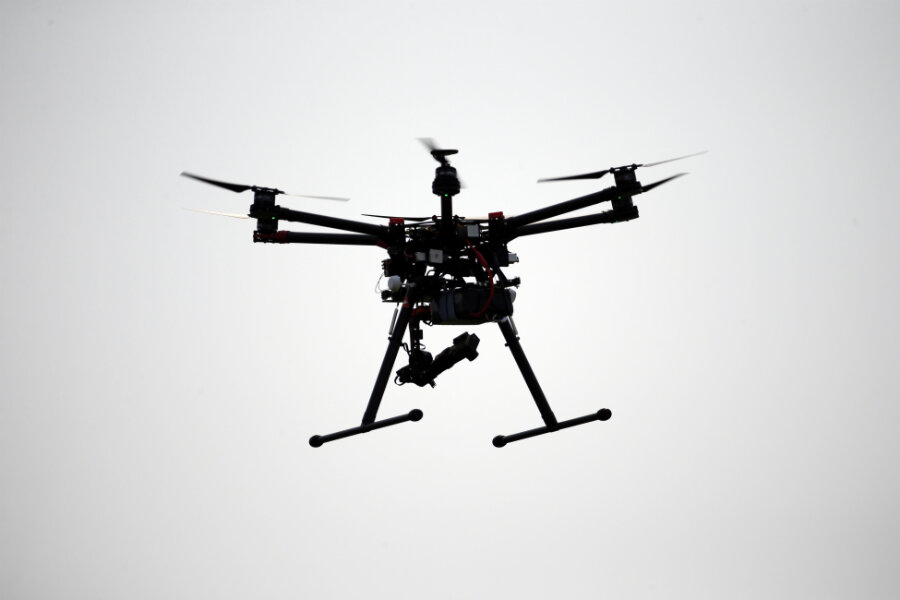'It's a bird, it's a plane' – no, it's a manned drone
Loading...
They are hovering in the skies everywhere – delivering packages, surveying wildlife, monitoring drug trafficking along borders, and providing images for filmmakers and photographers. It’s the drone craze!
Now, a British man has built a "super drone" with 54 propellers, able to keep a human in the air.
The machine, dubbed "The Swarm Manned Aerial Vehicle Multirotor Super Drone," can carry a weight of up to 350 pounds on a single battery charge for about 10 minutes.
A video of the super drone in flight shows it getting off the ground by quite a few feet, enough to make the camera operator shout, "Be careful!”
What it looks to be is the high-tech version of tying balloons to a lawn chair and launching oneself into the air.
In July, a Canadian man found himself in trouble with police after he attached more than 100 helium balloons to a lawn chair and floated into the skies. Upon landing, police arrested him and charged him with one count of mischief, causing danger to life.
In 1982, Lawrence Walters, also known as Lawn Chair Larry, pulled a similar stunt in San Pedro, California. Mr. Walters became a sensation when he tied 42 weather balloons to a lawn chair and took a 45-minute ride to a height of 16,000 feet. Adrift and out of control, he got cold, shot some balloons out, and crashed into a power line. He was fined $1,500 by the Federal Aviation Administration (FAA).
Has Lawn Chair Larry entered the drone world? Will the drones of the future be human-manned? We can only wait and see.
For governmental aviation organizations across the world, the possibility adds one more level of complexity to an already challenging regulatory area.
When it comes to unmanned aircraft – which would include drones – the FAA bans their use at any height above 400 feet.
The FAA also states that they should not weigh more than 55 pounds. If they are to be used within five miles of an airport, its air traffic control tower should be notified in advance.
In the United Kingdom, the Civil Aviation Authority restricts the flying of drones “beyond the normal unaided 'line of sight' of the person operating it" which is generally measured as 1,640 feet horizontally or 400 feet vertically.
However the BBC notes, “recent evidence suggests the rules are being flouted in the UK either because people are unaware or are willfully ignoring them.”
In July, the Civil Aviation Authority launched a drone safety awareness campaign, dubbed “Dronecode,” that targeted the increasing number of recreational drone users in the UK.
“We want to embrace and enable the innovation that arises from the development of drone technology, but we must ensure that this is done safely, with all airspace users in mind. Drone users must understand that when taking to the skies, they are entering one of the busiest areas of airspace in the world – a complex system that brings together all manner of aircraft including passenger aeroplanes, military jets, helicopters, gliders, light aircraft and now drones,” said Tim Johnson, CAA Director of Policy.
The FAA predicted in 2012 that within 20 years there could be as many as 30,000 drones flying over US soil alone. How many of these might be manned remains to be seen.





